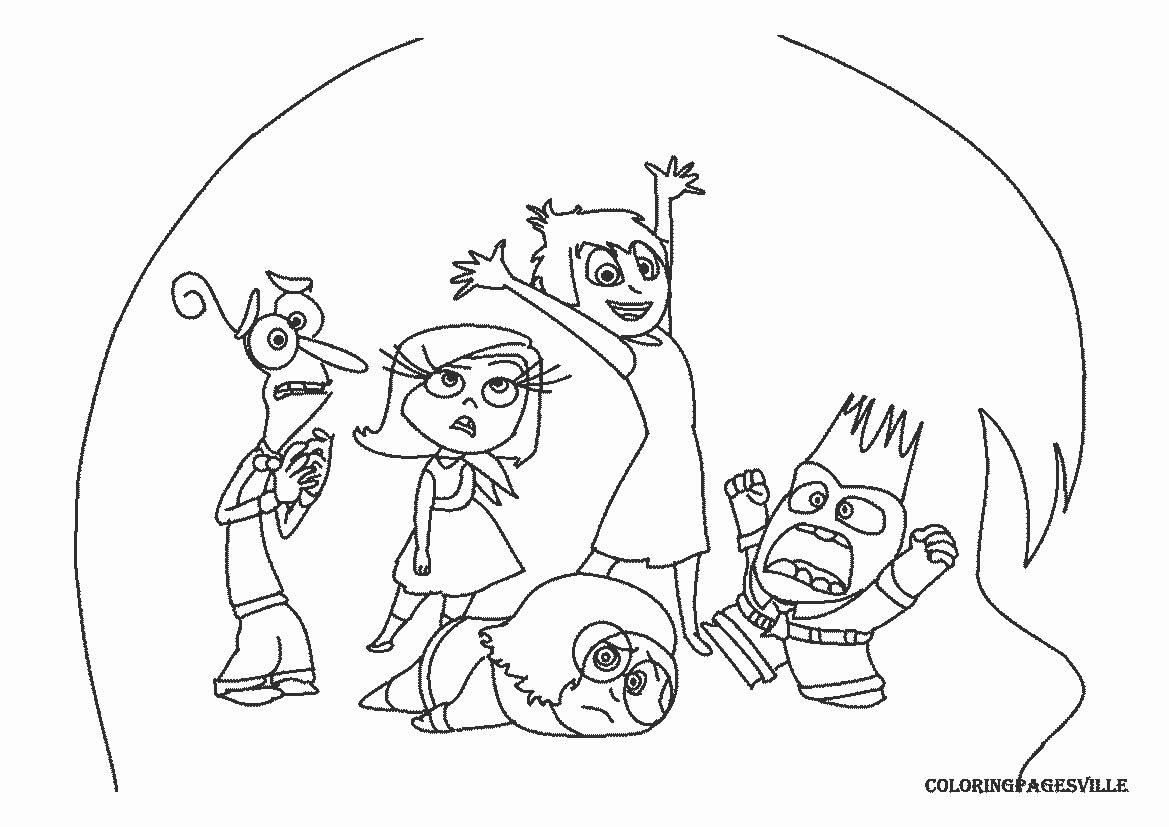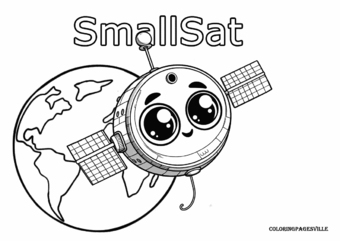
Inside Out coloring pages are featuring Riley, Joy, Sadness, Fear, Disgust, Anger, Bing Bong and other characters from Inside Out animated film. Try to guess who is who.
In Inside Out, young Riley's mind becomes the stage for a most peculiar and colorful soap opera, starring none other than her own emotions: Joy, Sadness, Anger, Fear and Disgust. Each of them has a job to do and naturally, each thinks they’re better at it than the others. For the most part, they manage to keep the machinery of Riley’s psyche ticking along in awkward harmony—until, that is, they realize that they’re each about as useful as a chocolate teapot without the others. As it turns out, even Joy can't go it alone without stumbling into the odd existential crisis.
What Inside Out does, rather splendidly, is teach young minds that emotions are far more than a pesky nuisance or an occasional storm cloud; they’re, in fact, the essential gears in the grand engine of human experience. It suggests, in no uncertain terms, that one can indeed be utterly devastated and still get up to eat cereal the next morning and that being overwhelmed with joy doesn’t mean you won't stub your toe on the way to the fridge. Each feeling, from gleeful exhilaration to that soggy lump in your throat, has a specific purpose—even if that purpose is to make you want to hide under the bed on certain days.
And if Inside Out imparts one undeniable truth, it’s this: sometimes you have to be a little bit sad to fully enjoy being happy and sometimes you have to admit that asking for help is a very clever idea indeed. Riley learns, as we all must, that life is a grand muddle of ups and downs and that’s precisely what makes it worth the ride. If nothing else, she—and the viewer—come to realize that joy and sadness are not polar opposites but rather odd, inseparable roommates in the peculiar flat of human emotions.
In Inside Out, young Riley's mind becomes the stage for a most peculiar and colorful soap opera, starring none other than her own emotions: Joy, Sadness, Anger, Fear and Disgust. Each of them has a job to do and naturally, each thinks they’re better at it than the others. For the most part, they manage to keep the machinery of Riley’s psyche ticking along in awkward harmony—until, that is, they realize that they’re each about as useful as a chocolate teapot without the others. As it turns out, even Joy can't go it alone without stumbling into the odd existential crisis.
What Inside Out does, rather splendidly, is teach young minds that emotions are far more than a pesky nuisance or an occasional storm cloud; they’re, in fact, the essential gears in the grand engine of human experience. It suggests, in no uncertain terms, that one can indeed be utterly devastated and still get up to eat cereal the next morning and that being overwhelmed with joy doesn’t mean you won't stub your toe on the way to the fridge. Each feeling, from gleeful exhilaration to that soggy lump in your throat, has a specific purpose—even if that purpose is to make you want to hide under the bed on certain days.
And if Inside Out imparts one undeniable truth, it’s this: sometimes you have to be a little bit sad to fully enjoy being happy and sometimes you have to admit that asking for help is a very clever idea indeed. Riley learns, as we all must, that life is a grand muddle of ups and downs and that’s precisely what makes it worth the ride. If nothing else, she—and the viewer—come to realize that joy and sadness are not polar opposites but rather odd, inseparable roommates in the peculiar flat of human emotions.
Add comment

